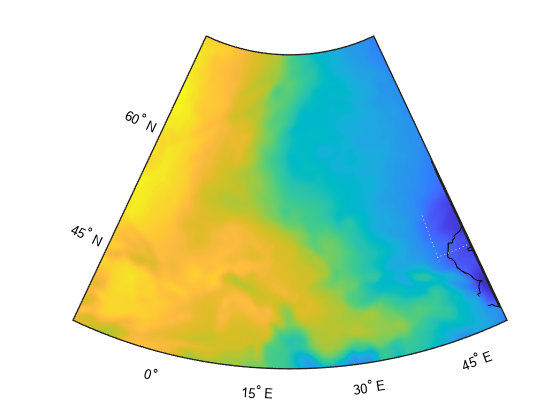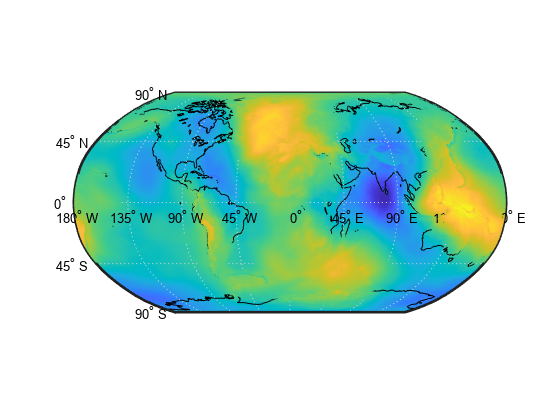egm96geoid
Geoid height from Earth Gravitational Model 1996 (EGM96)
Syntaxes of the egm96geoid function that return referencing vectors
have been removed. Use a syntax that returns a reference object instead. For more information,
see Version History.
Description
N = egm96geoid(lat,lon)
[
returns geoid heights for the entire globe as a 721-by-1441 matrix spaced at 15-minute
intervals with latitude limits N,globalR] = egm96geoid[-90 90] and longitude limits
[0 360]. The function also returns a geographic postings reference
object that contains spatial referencing information for the geoid heights.

